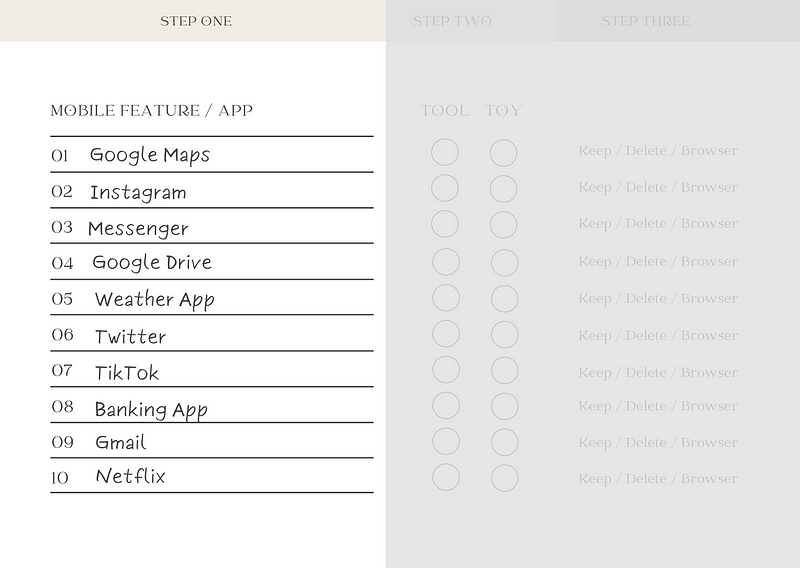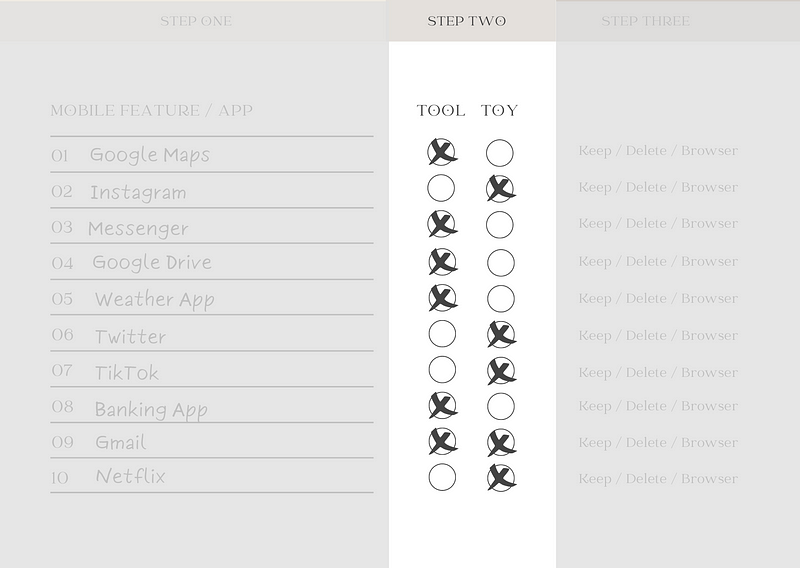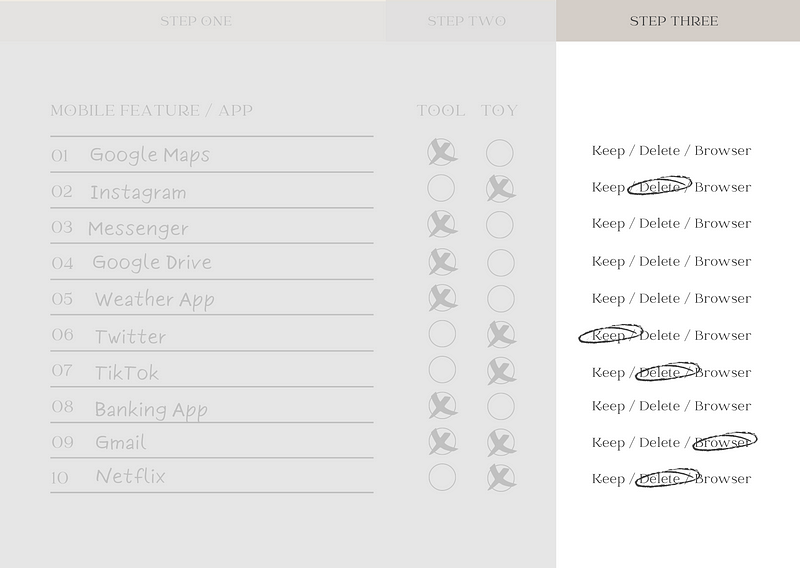# Transforming Your Smartphone: From Distraction to Productivity
Written on
Chapter 1: The Toy-Tool Method Explained
In today's world, our smartphones can either serve as a source of distraction or become valuable tools for enhancing our daily lives. As entrepreneur and investor Naval Ravikant wisely observed, “We’re not meant to check our phones every five minutes. The constant mood swings of getting a ‘like’ then an angry comment makes us into anxious creatures.” This article introduces a three-step approach to help you reclaim control over your smartphone and convert it from a mere distraction into a useful asset.
Step 1: Regaining Perspective
Our smartphones have become essential components of our daily routines, akin to brushing our teeth or heading to work. Initially designed as portable communication devices, they now function as televisions, cameras, radios, flashlights, and more. This multifunctionality can make it challenging to limit our screen time.
Your Task: Create a comprehensive list of features and applications installed on your smartphone.
- Features: Elements that don't require an app (e.g., clock, flashlight).
- Apps: Those you’ve downloaded and those pre-installed when you acquired the device.
Tip: Compile this list without judgment. The aim is to heighten your awareness of what’s on your phone, as awareness is the first step towards meaningful change.

Step 2: Identifying the Distraction
You may have clicked on this article because your smartphone has shifted from being a valuable tool to a significant distraction. With your list in hand, it's time to analyze the sources of distraction.
Why are smartphones so captivating? While they are designed to save us time and effort, they often lead us away from our intended tasks. Even when we unlock our phones for a specific reason—like checking a fact or updating a calendar—we are frequently lured into social media or other distracting apps.
To minimize distractions, it’s essential to differentiate between the phone's utility and its entertainment value.
Your Task: Review your list and categorize each item as either fulfilling a practical role (Tool) or serving a recreational purpose (Toy).

Step 3: Taking Action
After determining whether your phone serves more as a tool or a toy, it’s time to act. To reduce distractions, you should enhance its utility while minimizing its recreational aspects. As Ryan Holiday noted, “The less you use your phone to deal with trivial matters or minor conveniences, the less dependent you’ll be on it.”
Your Task: For each item marked as a ‘Toy,’ decide whether to keep, delete, or access it through your browser.
- Keep: Retain an app only when absolutely necessary.
- Delete: Remove distracting apps that add no real value.
- Browser Access: If an app is essential, consider deleting it and using its website instead, as mobile sites are generally less addictive.

To undertake this exercise effectively, download the ‘Toy-Tool Method’ Worksheet and Guide here.
I trust this article and the accompanying exercises will assist you in spending less time on your devices and more time nurturing your relationships, focusing on your wellness, and enjoying restful moments.
Thank you for reading, and as always—stay kind! :)
Chapter 2: Enhancing Smartphone Productivity
Incorporating helpful strategies can further improve your smartphone experience.
The first video, "7 Tips for a Distraction-Free Smartphone," offers practical advice on making your device more focused and less distracting.
The second video, "I Turned My Phone Into A Productivity Machine & Beat My Phone Addiction," provides insights on transforming your device into a powerful productivity tool.